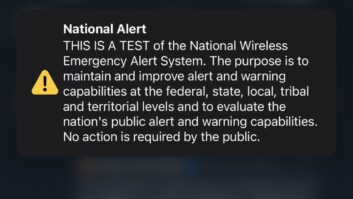FEMA partially lifted the curtain on where its CAP-EAS plans stand, but broadcasters on the panel still had more questions than answers at the end of the day.
Lance Craver, program manager of FEMA’s Integrated Public Alert and Warning System, said the agency is working to “deconflict” federal guidance for warning the public in emergencies.
I-PAWS theoretically would use CAP to support audio, video, text and data messages sent to residential telephones, to Web sites, to pagers, to e-mail accounts and to cellphones. However, the agency has now told the FCC and Congress it doesn’t believe it has the legal authority to implement parts of the system, particularly whether it has say over non-government participants during non-emergency periods.
This is a problem, considering that last summer the FCC turned over the next-gen portion of emergency alerting to FEMA, saying that agency would develop standards to become effective 180 days after publication in the Federal Register.
This move was at the behest of the Bush administration. The president has sole responsibility for determining when the EAS will be activated at the national level, and has delegated this authority to FEMA.
The FCC said EAS participants must be able to receive CAP-EAS messages.












